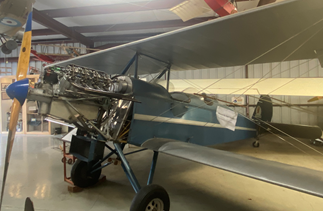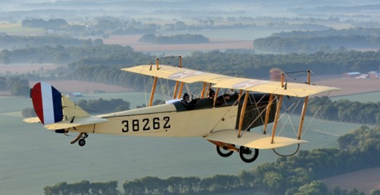By Mark Lindberg
Following the significant advances in aviation during World War I, there was a surplus of both aircraft and experienced pilots that became part of the Roaring 1920’s. This situation was combined with a huge percentage of the US population who watched and read about aircraft but had never experienced actual flight.
This imbalance of supply and demand was soon remedied with the “Barnstormers” of the 1920’s that included WWI Ace Eddie Rickenbacker and future US Mail and Transatlantic Pilot Charles Lindbergh. Initially they flew the many war surplus, new in the crate, Curtiss JN-4 Jenny two place trainer airplanes. Imagine a “barn stormer” landing his Jenny in a grass field at local county fair after flying low (probably “buzzing”) over the nearby cities and towns. Residents would travel to the often grass-landing area with a mixture of bicycles, horses, and a growing number of model T Fords, etc… many would pay nearly a days’ pay of about $5 to go for a 10-12 minute airplane ride… with the Curtiss 90 HP OX-5 engine burning about 8 gallons per hour of gas at $.20 a gallon, there remained a gross profit for travel, maintenance, and income for the pilot/owner.
But wait… what if there was an aircraft that could carry TWO passengers? Voila…! A real money-maker that helped spread the aviation experience over the United States.
This was the situation for the 1925 American Eagle first manufactured by the American Eagle Corporation of Kansas City, MO, founded by Edward Porterfield. In addition to doubling the passengers, the American Eagle had a steel tube frame vs. the wood frame of the Jenny. With very few hangers in the early days of aviation, wood-frame aircraft could deteriorate in less than ten years. The 1928 American Eagle Model A-101 in the Wings of History Museum was designed by Robert McCrum and Waverly Stearman, and first flew April 9th, 1926. It has the 100 HP Curtiss OXX-6 engine, and it’s rumored that Charles Lindbergh might have flown it. It was restored in 1962 and won the coveted Grand Champion Prize during the 1966 Watsonville airshow and was donated to the Wings of History Museum in 1971 by owner Ted Homan. About 300 of this Model were build, and very few remain in airworthy condition. After a total of 500 aircraft, American Eagle became a victim of the Great Depression.


